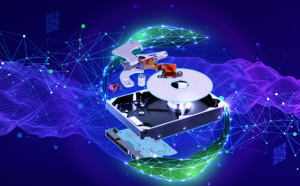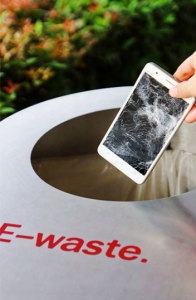Two thirds of the world economy today – including China, USA and Europe – is under a net-zero emissions goal by mid-century. At the same time, hazardous substance regulations are constantly increasing. There is clear, global consensus: Human activities as they are today are not sustainable. Companies set their own goals and follow targets verified by third parties – but when it comes to walking the talk and growing as a business, some organizations struggle. The good news? It’s possible for companies to turn environmental sustainability challenges into competitive advantage.
Why must high-tech companies consider a sustainability strategy?
Stakeholders are becoming more and more conscientious. In a report by Deloitte Insights, ESG mandated investments in the USA are increasing and – at the current rate – they will . In other words, investors are equating sustainability risk to financial risk. Consumer desires are also important to consider, especially for companies in the consumer electronics sector. Another study by Deloitte showed that 48% of UK consumers polled value a reduced carbon footprint when buying major household appliances. A third study, this one by Accenture, found that 50% of consumers are even willing to pay more for a product that was designed to be reused or recycled.
Climate change consequences today are directly visible and measurable, and consumers are therefore more and more cognizant of the impacts of their everyday choices. Consumers increasingly look at product content and ensure that it is compliant with regulations.

Because the regulatory landscape is constantly changing, companies are forced to be lean and dynamic to stay compliant in order to maintain brand perception and to protect their revenue. To give an example, in 2017 DirecTV found themselves in violation of California’s hazardous waste and unfair competition laws costing them $9.5 million.
Clearly, there is incentive for high-tech companies to attack sustainability challenges head-on. That being said, sustainability is a broad topic. Realistically, high-tech companies need to prioritize resources on the issues where they can have the largest impact and in areas where they can sustainably grow their business at the same time.
How about the e-waste issue?
Let’s look at e-waste, a major sustainability challenge in the high-tech industry today. With the pervasiveness of tech products, e-waste is the fastest growing waste stream in the world: standing at 53.6 Mt in 2019. Unfortunately, due to a lack of knowledge on how to recycle, few or no repair options, and generally short lifecycles, only 17.4% of e-waste is properly disposed of. What happens to the remaining 82.6%? We’re not sure. This is especially scary when you consider the number of hazardous materials present in e-waste such as mercury and cadmium.

Although part of the problem can be solved by responsible consumption and proper recycling by the consumer, companies have a large role to play to combat this issue. Governments agree with this: we are seeing more legislations such as the Right to Repair regulation passed in France.
To respond to these pressures, companies can take several different approaches. For example, the lifetimes of smartphones can be lengthened by increasing durability; a laptop can be designed to be easy to disassemble; or a take-back program can be incorporated to refurbish or recycle products.
These approaches inevitably involve costs. The big “if” for companies is the uncertainty of whether the value generated from a project or program is greater than the cost involved to develop it. Alongside accurate measurements of KPIs and employee involvement, companies are finding that technology is an effective tool for their sustainability programs and are notably using digital platforms and big data to create and track the value created.
Virtual twin technology in combination with a powerful collaborative platform allows companies to explore more design options with simulation and evaluate the circular impact to identify the best approach, while ensuring compliancy with regulations. This helps solve the problem of smartphone longevity and, at the same time, minimizes the number of physical prototypes produced for each product iteration, saving time, money and material resources.
When designing a laptop, a virtual twin directly enables the manufacturing supplier to leverage product 3D data to perform virtual assembly and disassembly simulations. Collaboration with the recycling centers that process the laptop at its end-of-life will bypass the need to mine for virgin materials, reducing costs and emissions. A recent whitepaper by Accenture and Dassault Systèmes quantified this created value, finding that by properly handling and preventing e-waste through the implementation of a virtual twin, by 2030 emissions can be reduced by 36 Mton CO2e with an estimated captured revenue of $73 Bn. You can learn more about this in a recent blog post.
These are not negligible amounts. Yet the numbers do not include the protected revenue from proper compliance management. Nor do they include the potential increase in market share that can result by attracting consumers through sustainable practices. Proactively addressing the most pressing environmental issues is one of the top challenges today for high-tech companies looking to grow and create value. This is not only the case for consumer-facing companies, however. 45% of supply chain executives are experiencing increased regulatory and internal compliance for signing contracts, meaning staying ahead of compliance issues provides a competitive edge in the extremely dense supplier market.
A virtual lever to capture the value of sustainability
Environmental protection is arguably an issue the whole world has in common, and governments are not waiting to act on the threats to the planet. Complying with an ever-changing regulatory landscape and the international agreements on emissions can be a headache for companies. Using new and disruptive technology such as virtual twins to enable simulations, model disassembly for recycling and general e-waste reduction, high-tech companies can turn these challenges into value-creating business strategies.
Find out more about Dassault Systèmes enabling solutions for sustainability in the high-tech industry. Learn more about the whitepaper by Accenture & Dassault Systèmes. Read more about generating value from the e-waste challenge.
